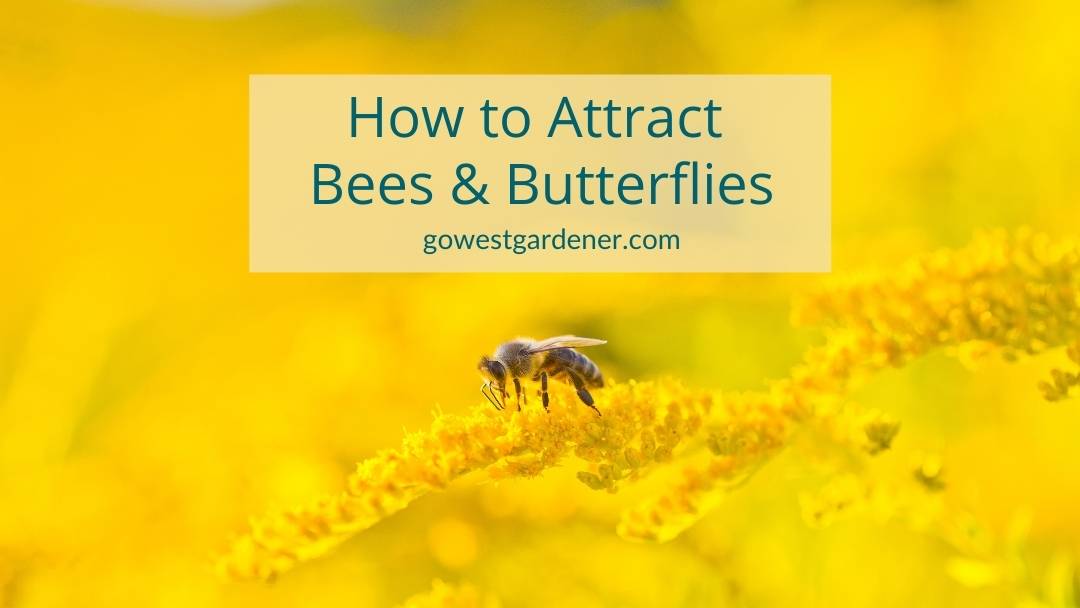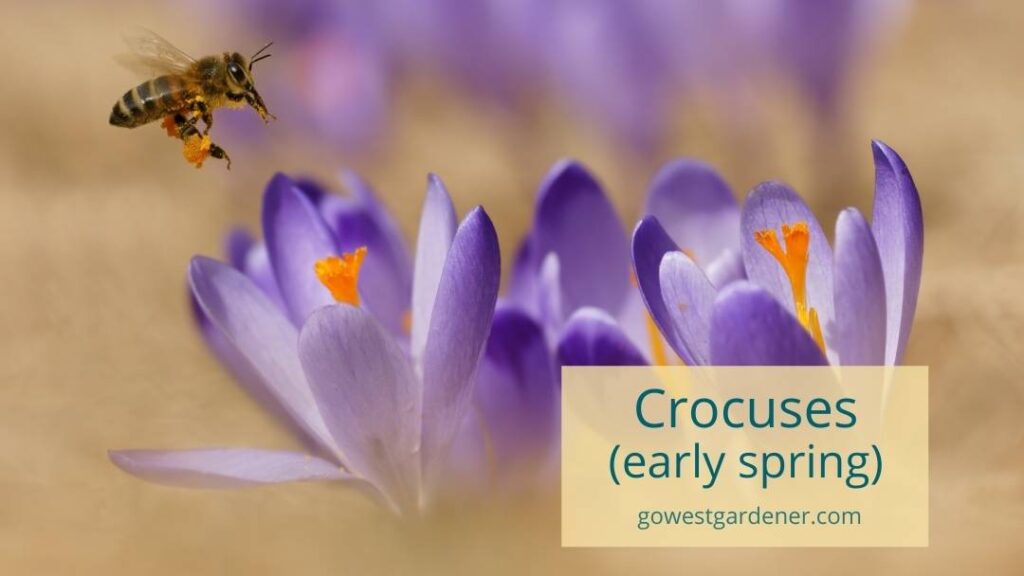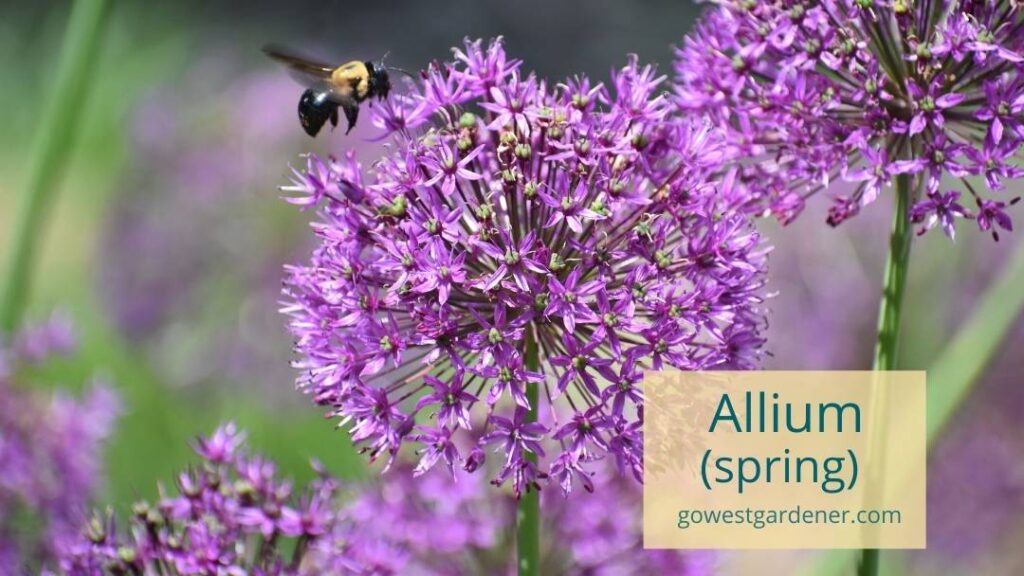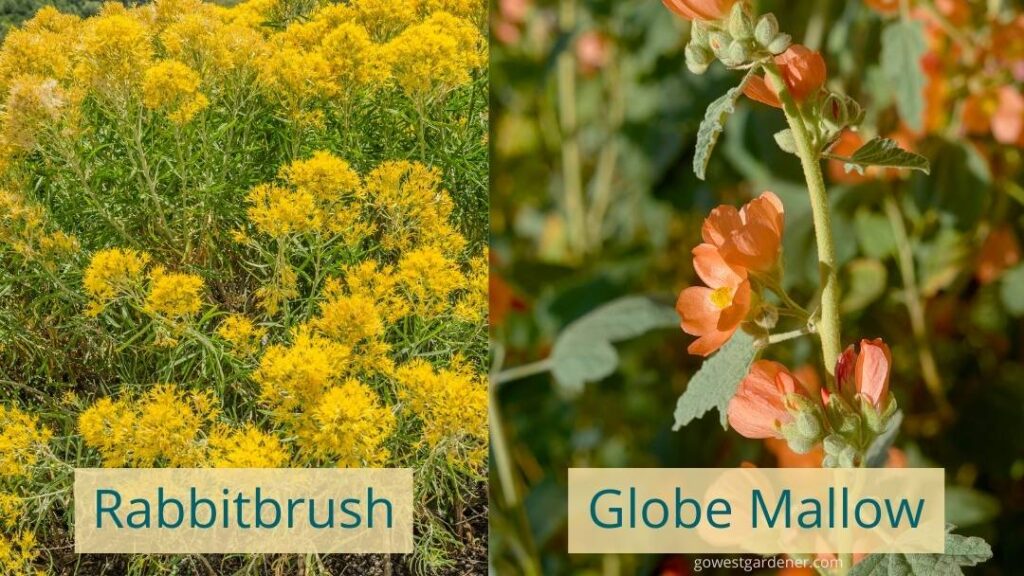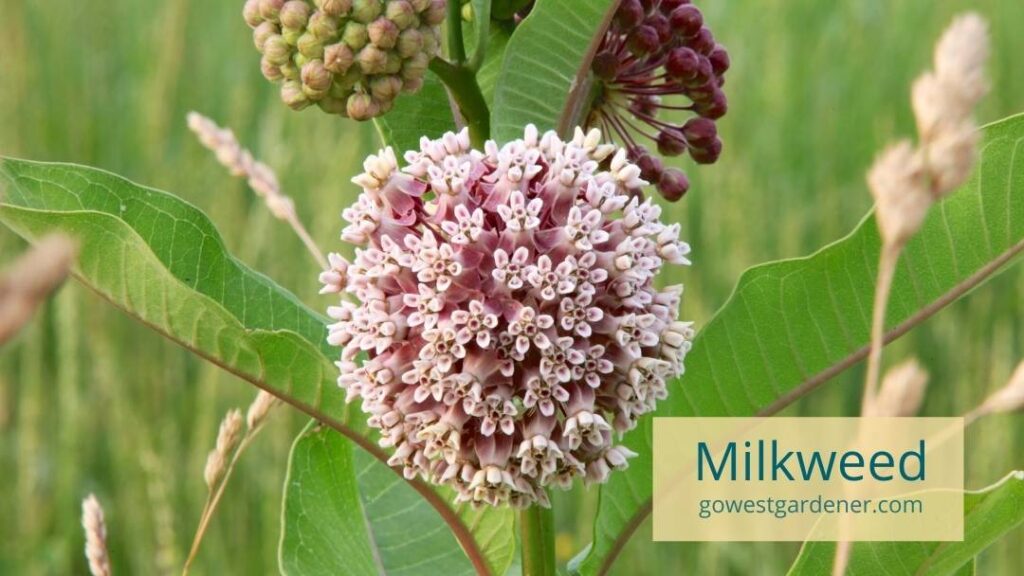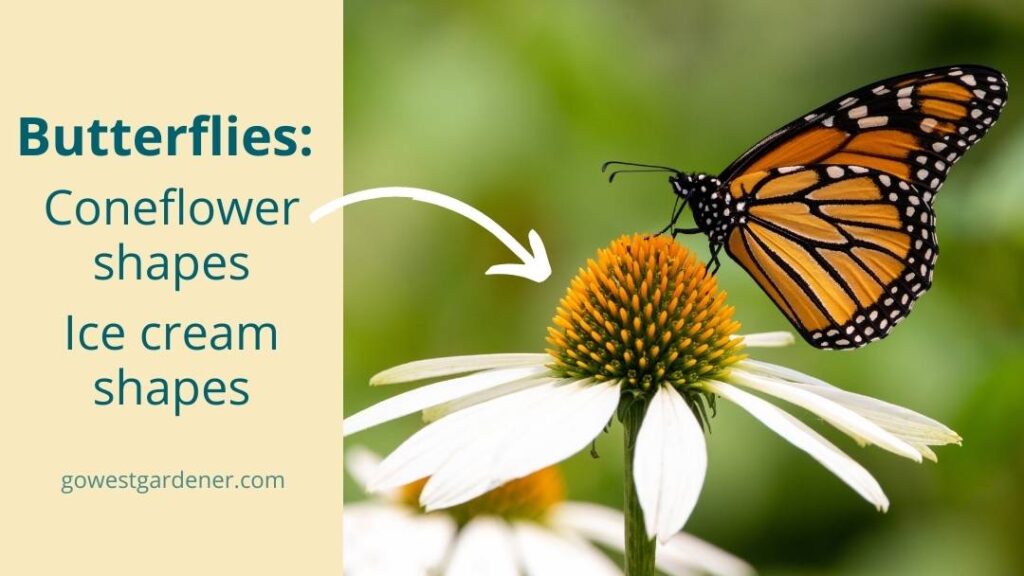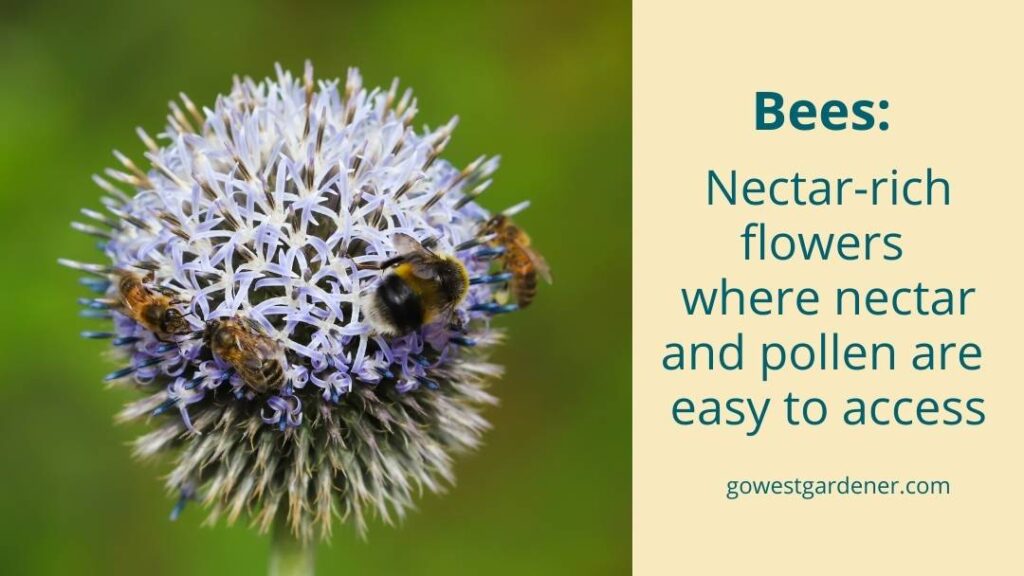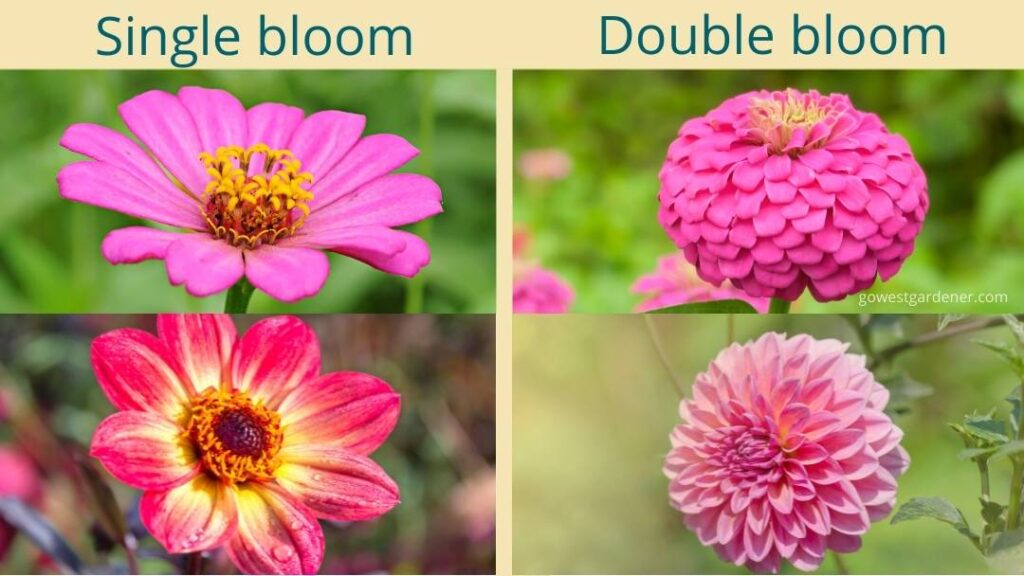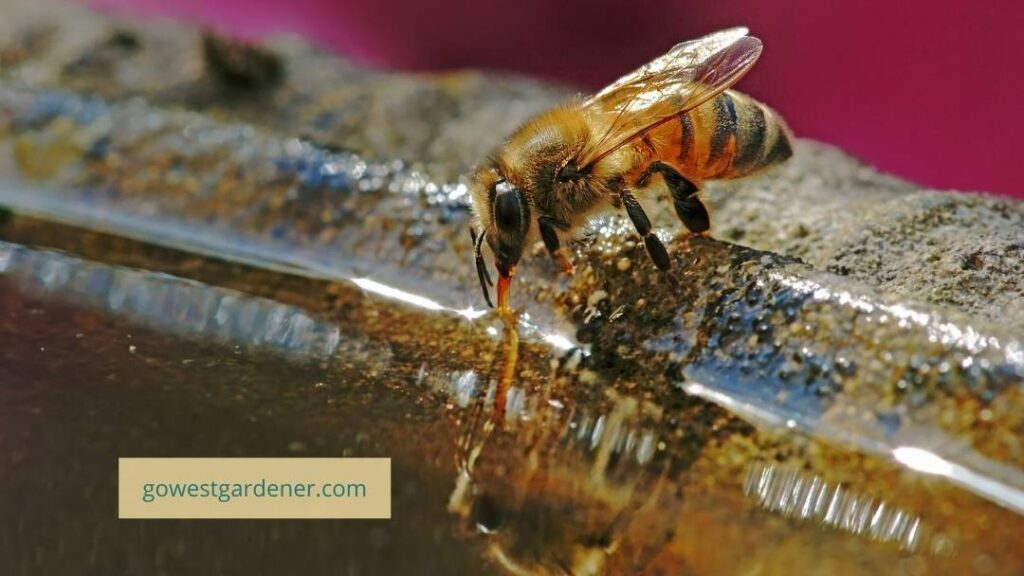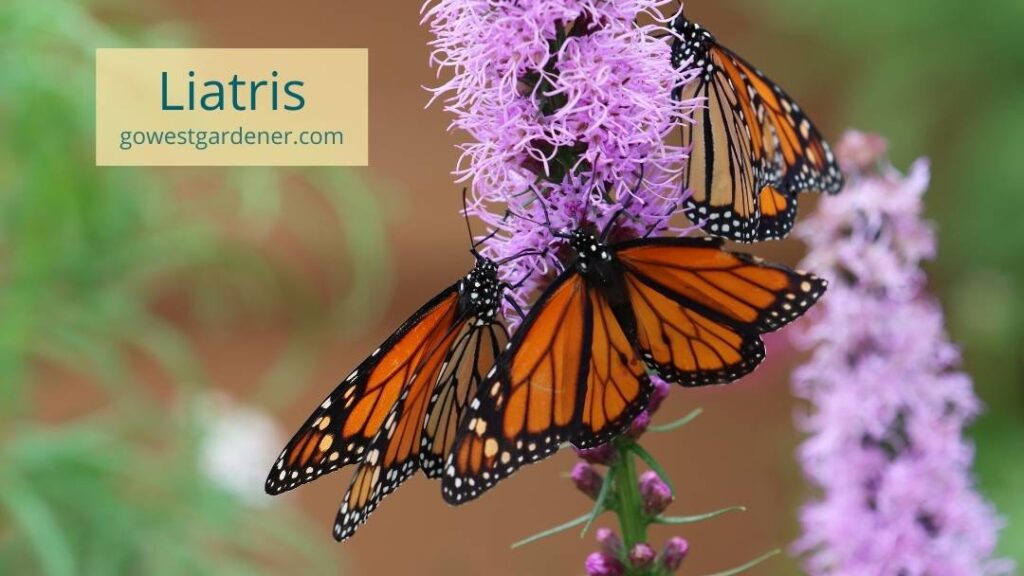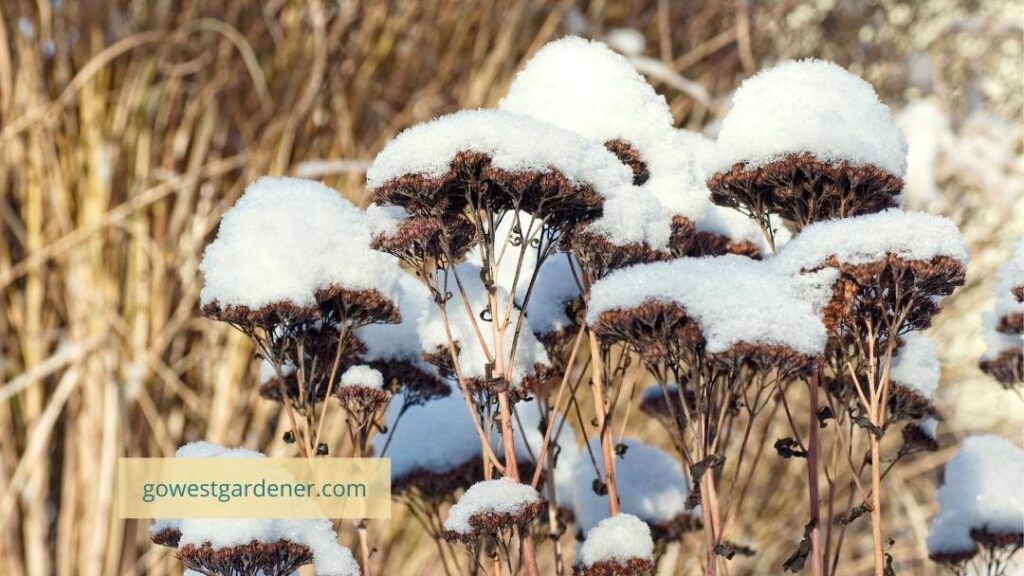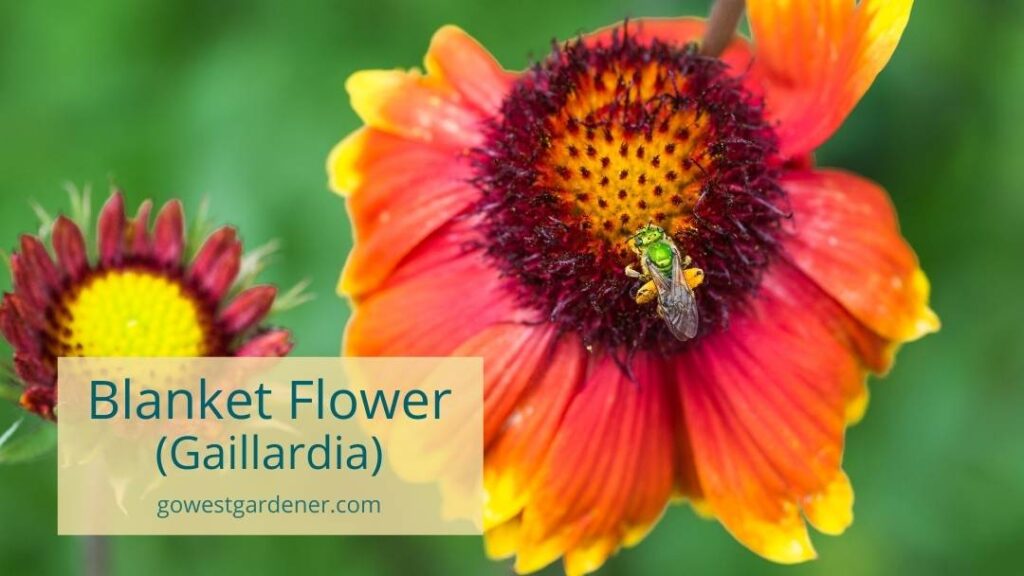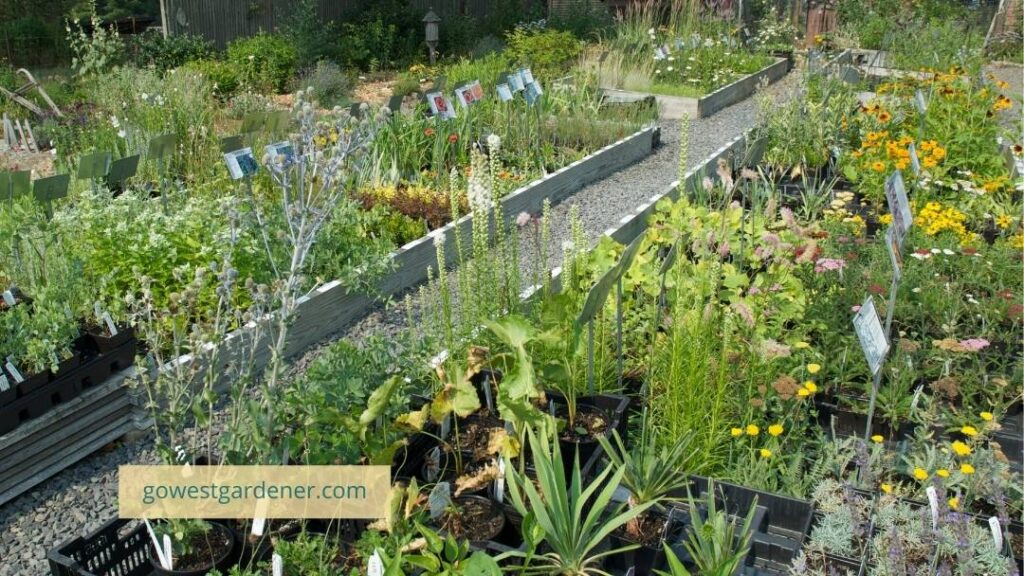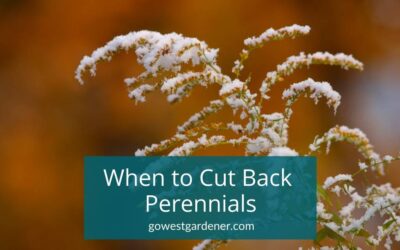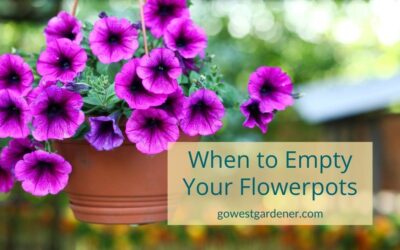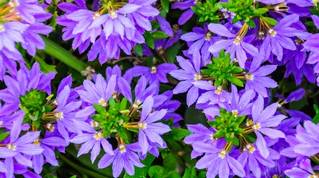10 tips to create a pollinator garden in Colorado, Utah and similar states
Do you want to attract bees and butterflies to your garden? Me too!
These wonderful pollinators need just a few, basic survival elements:
- Food (from nectar-rich flowers)
- Water sources
- Cover (shelter)
- Places to raise and feed their young
- Protection from pesticides
Here are 10 tips to create a pollinator garden that not only attracts bees and butterflies, but also offers an environment where they can thrive.
1) Plant a variety of flowers that bloom at different times—from spring to fall.
That way, you’ll give your bees and butterflies a constant source of food and shelter.
Typically, pollinators can find food sources during the summer. (It’s easy to find flowers that bloom in June and July!) So, if you’re prioritizing, focus on adding flowers, flowering shrubs or flowering trees that bloom in the spring, late summer or fall. This is when food can be scarce for bees.
At the end of this article, you’ll find good plant lists for butterflies and bees.
2) Include native plants in your garden, when possible.
There are approximately 1000 native bee species in Colorado and close to 1000 native bee species in Utah.
Native bees tend to like native plants.
Native plants have been around for a long time—since before Europeans settled in North America. They’re “ecologically adapted” to your area, just like your native bees are. They’ve evolved together. These plants are very appealing to pollinators, especially bees and butterflies that have had their habitat destroyed by urban development.
Some bees will only gather nectar and pollen from specific native plants—like Rabbitbrush (Chrysothamnus nauseosa), Globe Mallow (Sphaeralcea munroana) or Sunflowers (Helianthus).
Butterflies can prefer specific plants too.
For example, Monarch butterflies will only use Milkweed plant as a “host” for their young. And other butterflies have their own preferences for plants to host their babies.
Despite their growing popularity, native plants can be tricky to find at some garden centers.
The best places to look for them are typically: local, independent garden centers, online retailers and native seed companies.
3) Plant flowers with different bloom shapes, sizes and heights.
If you want to attract bees and butterflies to your garden, make sure you have variety in your flowers!
Butterflies:
Butterflies tend to like coneflower-shaped flower heads and ice cream-shaped flower heads.
Butterflies won’t climb into a flower. Instead, they prefer flowers where they can perch with a 360-degree view—ideally, in an open spot with a lot of sunlight.
Bees:
Bees’ favorite flower colors are blue, yellow, white or ultra-violet. They’re drawn to nectar-rich flowers with an easy-to-access supply of nectar and pollen.
As my ecology instructor used to say, bees like flowers “with landing platforms.” They also like tubular flowers.
Single-bloom flowers are best.
Avoid “double-bloom flowers” (aka, double flowers). What the heck is a double-bloom flower? It’s a flower with extra flower petals. Here are examples with Zinnias and Dahlias:
Double-bloom flowers may look beautiful, but they make it harder for bees to get to the nectar and pollen. (And sometimes, these flowers don’t even have nectar and pollen!)
As far as flower size goes, there is no one-size-fits-all for bees. It depends on the bee. Some larger, native bees prefer larger flower heads. Other bees are drawn to very small flower heads.
Again, variety is key!
4) Plant flowers in groups (clumps of 3+ flowers), rather than individual plants.
For one thing, this can look natural and attractive.
But it also can be helpful for bees like honeybees. They like to gather nectar and pollen from the same flowers at one time. When you plant in groups, you’re more likely to attract honeybees—and keep them happy. You’ll help them focus their energy on gathering food.
5) Include a shallow water source in your garden.
To give your bees a safe place to drink:
- Create a shallow pool with an old plate, flowerpot saucer, upside-down frisbee or shallow bird bath.
- Place objects—like pebbles, rocks and twigs—in the water, so your pollinators have a place to stand without drowning.
Bees also will drink water from your sprinkler heads or your drip system heads.
So, what about butterflies?
Adult butterflies like sweet liquids. They’re drawn to nectar, rotting fruit and other sweet liquids.
Male butterflies do like shallow mud puddles, though. While the reason isn’t fully known, it’s believed that dissolved minerals in the water may be good for butterflies.
Caterpillars primarily get their liquids from the plants they feed upon.
6) Make sure you have a sunny area that’s protected from the wind.
In western states like Colorado and Utah, we can get wind gusts that make it feel like our houses are coming apart at the seams!
Adult butterflies like to feed in sunny spots that are open… but also protected from the wind. So, if you can create a wind break in your garden, that’s ideal for your pollinators, particularly your butterflies.
7) Cut your flower garden back in the spring, rather than in the fall.
If possible, this means leaving some natural debris—like fallen leaves and plant stems—in your flower garden over winter.
Around 70% of Colorado’s native bees nest in the ground, and the other 30% nest in cavities, like hollow plant stems. When you wait until spring to trim back your flower garden, you provide good, undisturbed nesting grounds for bees.
You keep their nests safe and protected.
I know we’re chatting about bees and butterflies in this article, but it’s worth noting that your winter garden also can be a big hit with birds. Dried flower heads offer good food sources for them. And they can take shelter in your garden.
8) Gives bees shelter in your soil (dirt).
Did you know that 90% of native bees are solitary bees? They live alone, rather than in a colony.
And as I mentioned earlier, most native bees nest in the ground. To create a bee-friendly environment in your soil:
- Avoid using landscape fabrics. They keep bees from being able to tunnel into the ground.
- Avoid thick mulch in select places in your garden. Mulch is a material you put on top of your soil—like bark or wood chips. It offers a lot of benefits for plants, but deep layers of mulch can make it difficult for bees to nest in the ground. You may want to selectively choose a few spots where you use a thin layer of mulch or no mulch at all.
- Avoid tilling. Tilling is when you extensively turn your soil over until it’s all broken up. There was a time when tilling was a popular garden practice. However, it’s fallen out of favor in home gardens because it can create soil structure problems and destroy beneficial organisms. (It messes up the health of your soil, which can lead to problems in your plants.) In this case, avoid tilling because it can destroy your bees’ nests and/or kill bees or their young.
- Avoid using overhead sprinklers during the day. Instead, use drip irrigation (small irrigation lines that run to the plants). This way, the mama bee will be able to find her nest after a day of foraging. Overhead sprinklers can accidentally destroy the entrances with mud when the bees are away, says the Utah State University Extension.
9) Don’t use pesticides in your landscape.
If you want to attract bees and butterflies to your garden, avoid using chemicals to treat your lawn or plants.
And yep, this means you wouldn’t use pesticides for:
- Treating the weeds in your lawn or garden
- Fertilizing your lawn or your garden plants
- Battling Japanese beetles
The chemicals can transfer to bees and other pollinators when they land on the plants or feed from them.
(If you have no other alternative, use the mildest treatment you can. And spray when bees and butterflies are less active, like at dusk. Don’t spray during the day when pollinators are gathering food!)
10) Buy from bee-safe garden centers and growers.
Many plants sold at garden centers have been treated with “neonicotinoids”—a type of pesticide—early in their life cycle. This pesticide use is very common.
This pesticide is toxic to insects, including bees. It can stay inside plant tissues for a long time, leading to problems for pollinators that visit those plants, from impairment to death.
Some garden centers have pledged not to sell plants that have been grown with these chemicals. Here’s where to buy plants that are safe for bees in Colorado and the West.
Want more info on how to attract bees and butterflies?
Check out these resources:
- Monarch butterfly plant guides: Good nectar plants for adults Monarchs (Source: Xerces Society)
- Good plants for western butterflies: A list of flowers for butterflies + plants that are good hosts for caterpillars. (Source: Colorado State University Extension)
- Flowers for pollinators: A list of early season, mid-season and late season flowers for pollinators. (Source: CSU Extension)
- Plants that attract native bees in Colorado: A list of flowers for Colorado’s native bees. (Source: CSU Extension)
- Gardening and plants for native bees in Utah and beyond: A list of flowers for Utah’s native bees. (Source: Utah State University Extension)
- Gardening and landscaping practices for native nesting bees: More tips for bees that nest in the ground or in crevices. (Source: USU Extension)

